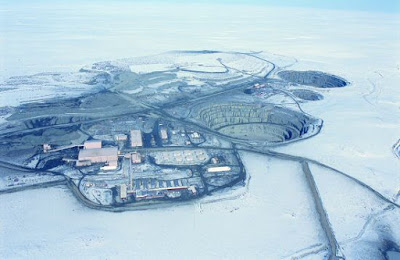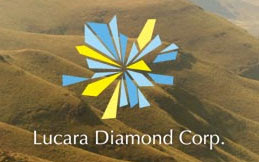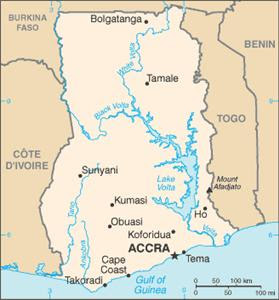
Zimbabwe's dictator Robert Mugabe is helping to prop up his power base with cash from Chiadzwa diamond auctions, it is claimed.
The global diamond industry has controversially cleared the way for President Robert Mugabe's regime to raise millions of pounds from exports, according to campaigners.
The Kimberley Process (KP) industry watchdog moved earlier this month to legalise sales from the 150,000-acre Chiadzwa fields in eastern Zimbabwe, which are controlled by the military and have been described by Zimbabwean finance minister Tendai Biti as "the biggest find of alluvial diamonds in the history of mankind".
Diamond sales from Chiadzwa could dwarf the impact of European and American sanctions and set the stage for Mugabe, 86, to strengthen his military, rebuild his power base and even stage elections this year.
"The agreement would allow a huge amount of diamonds from Chiadzwa to enter the international market, despite the human rights abuses that have been reported from the fields," said Elly Harrowell, who monitors KP for the Global Witness lobby group.
The huge diamond wealth of Chiadzwa in the Manicaland province was discovered in 2006 when a Zimbabwean company, backed by the military, moved on to the site. Some geologists say the concession – from which a British company, African Consolidated Resources, was ousted in 2006 – is the largest find in a century. Amnesty International has claimed that soldiers deployed to guard the fields have forced slaves to mine diamonds at gunpoint. Some reports have indicated security forces may have killed miners working illegally on the site.
Mugabe, who after disputed elections in 2008 entered an uneasy coalition with Morgan Tsvangirai, has called on his party, Zanu-PF, to prepare for elections this year. But Tsvangirai's Movement for Democratic Change (MDC) says a fair and violence-free poll cannot be held until a new constitution is agreed. Pro-democracy campaigners are lobbying the African Union, which meets this week in the Ethiopian capital, Addis Ababa, to call for the poll to be postponed until 2013.
The MDC says renewed persecution of its supporters suggests Mugabe is determined, come what may, to hold elections this year. There is evidence of Zanu-PF (Zimbabwe African National Union – Patriotic Front) stepping up distribution of seeds and food in rural areas, a classic sign of looming elections.
A University of Zimbabwe political science professor, John Makumbe, said: "We have just seen the appearance of £20m of farming inputs – tractors, seeds, tools and fertiliser. That can only have come from underhand diamond deals."
The KP certification scheme was set up by the diamond industry in 2003 in a bid to reassure consumers that gems they buy have not been used to fund illegitimate groups, such as the rebel bands which terrorised Charles Taylor's Liberia. Rough diamonds without KP certificates fetch much less money and can only be sold through complex, underhand networks. According to the diamond trade press, KP legalised sales of rough diamonds from Chiadzwa on 18 January after a written consultation process which followed deadlocked talks in Israel last year.
KP reintroduced a ban on exports from Chiadzwa in November last year, in response to concerns about transparency and corruption following auctions in August and September.
The new agreement comes as the industry is clamouring for rough diamonds amid a global shortage that has pushed up prices. It not only makes Zimbabwean diamonds legal but considerably simplifies the process through which the country has to go to sell them. It does away with the need for a KP monitor to supervise shipments and provides for exports to be allowed not only from the two companies operating at Chiadzwa but also from future mines in the fields. Already a major Indian consortium of diamond-cutting firms has welcomed the agreement. On Thursday, Surat Rough Diamond Sourcing announced that it would move to buy £750m of diamonds this year from Chiadzwa.
Zimbabwean pro-democracy campaigners are divided over KP certification. In November, Mugabe's minister of mines, Obert Mpofu, admitted that £100m of diamonds had been sold to India despite the KP ban in force at the time.
Makumbe said: "Without KP agreement Mugabe and his people sell diamonds anyway. At least if an official KP process is in place, there is some way of monitoring the income and there may be auctions which can be audited.
"Zimbabwe needs money desperately. At the moment, things are so tight that the government of national unity is increasingly being seen by the people as not succeeding in bringing about meaningful change."
























